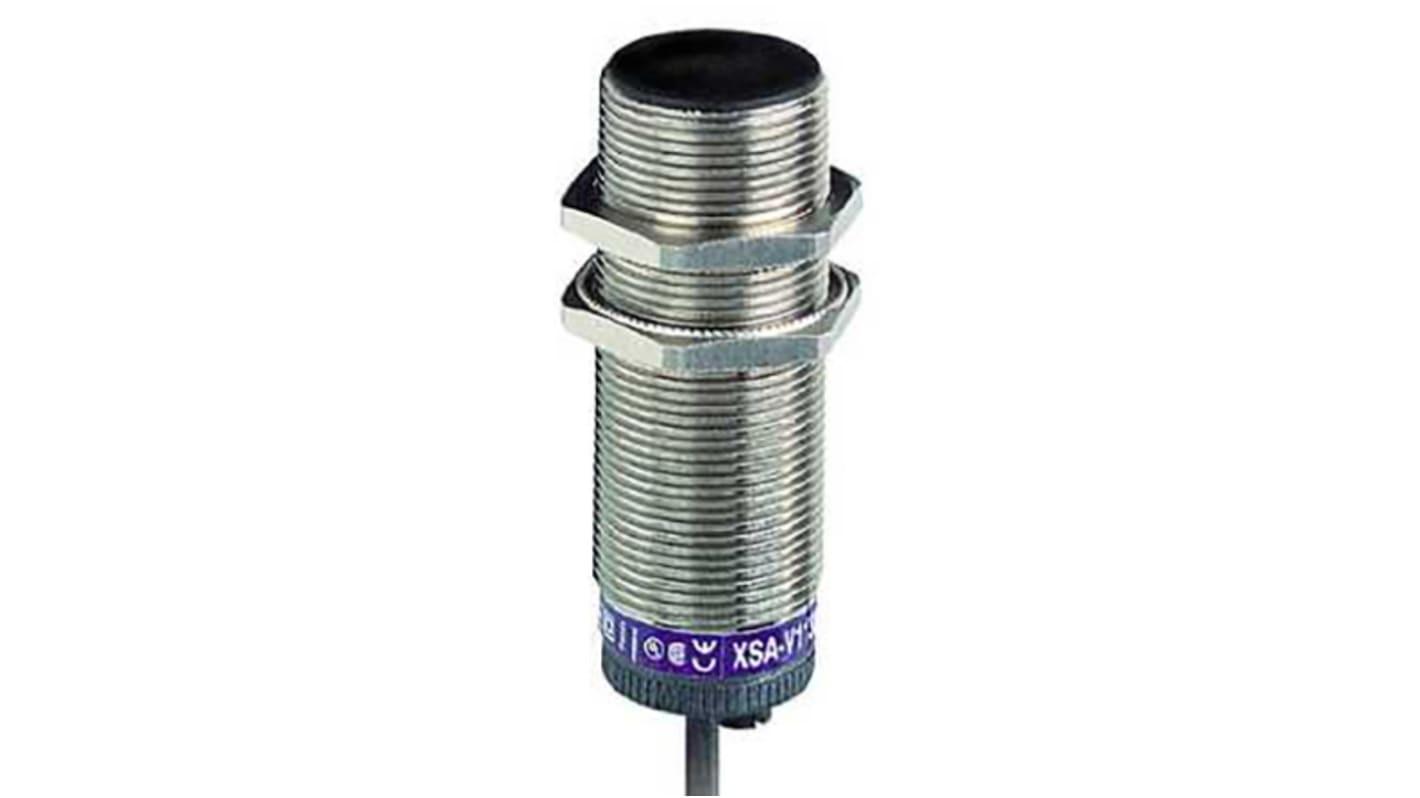Telemecanique Sensors Inductive Threaded Barrel Proximity Sensor, M30, 10 mm Detection, 2-Wire NC, 24 → 210 V
- RS Stock No.:
- 816-3663
- Distrelec Article No.:
- 303-04-367
- Mfr. Part No.:
- XSAV01801
- Brand:
- Telemecanique Sensors

Subtotal (1 unit)*
£189.98
(exc. VAT)
£227.98
(inc. VAT)
FREE delivery for orders over £50.00
- 3 unit(s) ready to ship
- Plus 8 unit(s) ready to ship from another location
Units | Per unit |
|---|---|
| 1 + | £189.98 |
*price indicative
- RS Stock No.:
- 816-3663
- Distrelec Article No.:
- 303-04-367
- Mfr. Part No.:
- XSAV01801
- Brand:
- Telemecanique Sensors
Select all | Attribute | Value |
|---|---|---|
| Brand | Telemecanique Sensors | |
| Thread Size | M30 | |
| Sensor Technology | Inductive | |
| Detection Range | 10 mm | |
| Body Style | Threaded Barrel | |
| Output Function | NC | |
| Digital Switching Output Type | 2-Wire | |
| Connection Type | Pre-Cabled | |
| Cable Length | 2m | |
| Supply Voltage | 24 → 210 V dc, 24 → 240 V ac | |
| Length | 81mm | |
| IP Rating | IP67 | |
| Mounting Type | Flush | |
| Housing Material | Brass | |
| Maximum DC Voltage | 210V | |
| Minimum Operating Temperature | -25°C | |
| Shielding | Shielded | |
| Maximum Switching Frequency | 100Hz | |
| Maximum Operating Temperature | +70°C | |
| Switching Frequency | 100 Hz | |
| Series | OsiSense XS | |
| Switching Current | 200 mA | |
| Select all | ||
|---|---|---|
Brand Telemecanique Sensors | ||
Thread Size M30 | ||
Sensor Technology Inductive | ||
Detection Range 10 mm | ||
Body Style Threaded Barrel | ||
Output Function NC | ||
Digital Switching Output Type 2-Wire | ||
Connection Type Pre-Cabled | ||
Cable Length 2m | ||
Supply Voltage 24 → 210 V dc, 24 → 240 V ac | ||
Length 81mm | ||
IP Rating IP67 | ||
Mounting Type Flush | ||
Housing Material Brass | ||
Maximum DC Voltage 210V | ||
Minimum Operating Temperature -25°C | ||
Shielding Shielded | ||
Maximum Switching Frequency 100Hz | ||
Maximum Operating Temperature +70°C | ||
Switching Frequency 100 Hz | ||
Series OsiSense XS | ||
Switching Current 200 mA | ||
RoHS Status: Exempt
- COO (Country of Origin):
- FR
Telemecanique Inductive Sensors
How do they work and where can I use them?
Related links
- Telemecanique Sensors Inductive Threaded Barrel Proximity Sensor 10 mm Detection 24 → 210 V
- Telemecanique Sensors Inductive Threaded Barrel Proximity Sensor 10 mm Detection 24 → 210 V,
- Telemecanique Sensors Inductive Threaded Barrel Proximity Sensor 15 mm Detection 24 → 210 V
- Telemecanique Sensors Inductive Threaded Barrel Proximity Sensor 4 mm Detection 24 → 210 V dc,
- Telemecanique Sensors Inductive Threaded Barrel Proximity Sensor 10 mm Detection 20 → 210 V
- Telemecanique Sensors Inductive Threaded Barrel Proximity Sensor 10 mm Detection 24 → 240 V
- Telemecanique Sensors Inductive Threaded Barrel Proximity Sensor 10 mm Detection 24 → 240 V dc
- Telemecanique Sensors Inductive Threaded Barrel Proximity Sensor 1 mm Detection 24 → 210 V dc,
